Creating an engaging and inspiring classroom environment can sometimes be challenging. Are you looking for fresh and creative ways to decorate your classroom? A well-decorated classroom makes learning more enjoyable and stimulates children’s creativity and enthusiasm for education. Let’s explore how the right decor can transform the learning experience for children.
In today’s educational landscape, the importance of a visually stimulating environment cannot be overstated. Children are naturally curious and respond well to vibrant and interactive settings. Classroom decoration is crucial in setting the tone for learning, fostering a sense of belonging, and inviting educational spaces. Whether you’re an experienced teacher looking to refresh your space or a new educator setting up your first classroom, these creative ideas will help create a dynamic and engaging learning environment.
One effective way to enhance the classroom atmosphere is by incorporating interactive and classroom decoration ideas. These ideas can spark creativity and make learning more enjoyable for young minds. Transforming your classroom doesn’t require a huge budget or professional design skills—just a bit of imagination and some thoughtful planning.
Explore 23 innovative classroom decoration ideas to captivate children and create a vibrant learning environment.


20 Best Classroom Decoration Ideas
Creating a vibrant and engaging classroom environment can significantly impact students’ learning experiences and motivation. Classroom decoration ideas are essential for teachers who want to make their classrooms inviting and stimulating for their students.
1. Interactive Bulletin Boards
Bulletin boards are a staple in any classroom, but making them interactive can take your decoration game to the next level. Create boards that allow students to contribute their work, ideas, and thoughts. For instance, a “What I Learned Today” board can encourage students to reflect on their learning daily. Change the themes regularly to keep the content fresh and engaging.
2. Display Students’ Work
Showcase your students’ work by creating a display area for their projects, artwork, and assignments. This makes the classroom more colorful and boosts students’ self-esteem and motivation. Change the display regularly to feature new work and keep students engaged.
3. Classroom Rules and Expectations
Display classroom rules and expectations in a prominent area. Use colorful posters and visuals to outline the regulations positively and encouragingly. This can help set clear expectations and maintain a structured learning environment.
4. Inspirational Quotes Wall
Dedicate a section of your classroom to inspirational quotes. Choose quotes from famous authors, scientists, and historical figures that resonate with your students. Change the quotes periodically to keep the inspiration flowing. This wall can serve as a daily dose of motivation for your students.
5. Student Workstations
Create personalized student workstations to foster a sense of ownership and pride. Decorate each workstation with the student’s name, some of their work, and a few personal touches. This can help students feel more comfortable and motivated to learn.


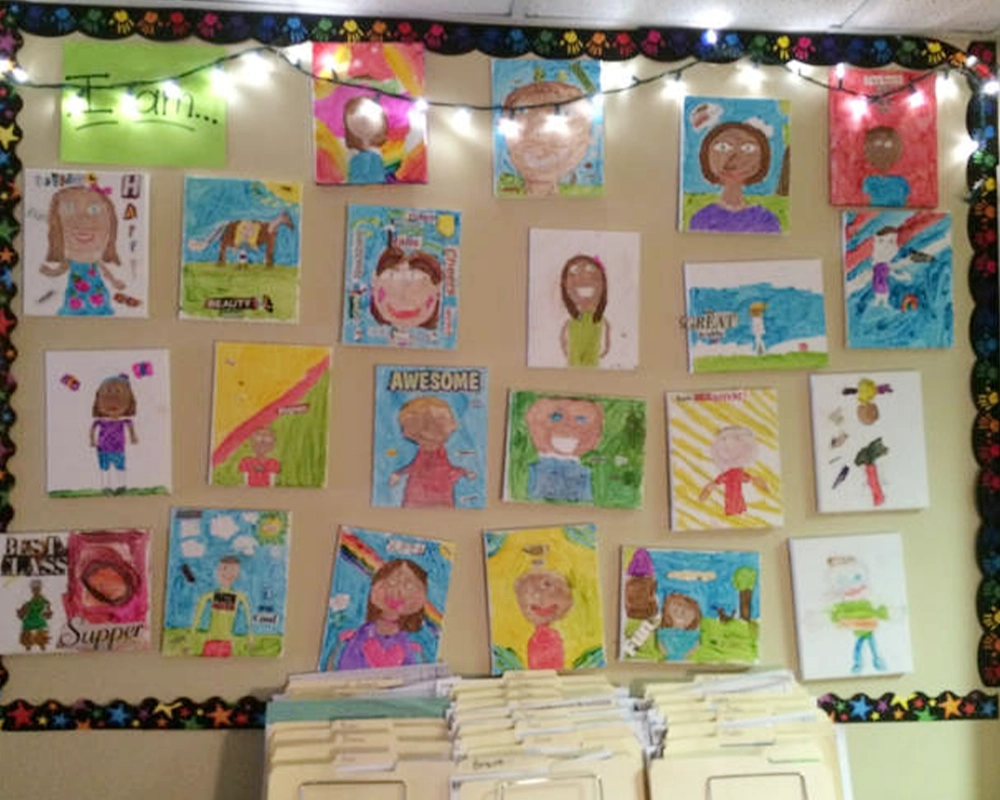
6. Classroom Theme
Designate different corners of the classroom for specific themes or subjects. For example, a reading corner with comfy chairs and bookshelves, a science corner with experiments and displays, and an art corner with supplies and student artwork. These themed areas can make learning more focused and enjoyable.
7. Wall Decorations
Incorporate educational posters and charts related to the subjects you teach. Visual aids like multiplication charts, periodic tables, and grammar rules can serve as constant reminders and help reinforce learning. Use colorful and engaging designs to make these posters appealing to students.
8. Classroom Library
A well-organized classroom library can encourage students to read more. Use bookshelves, comfy seating, and posters to create an inviting reading nook. Categorize books by genre, author, or reading level to make it easy for students to find their interests.
9. Classroom Maps
Display maps of the world, country, or region in your classroom. This can help students learn geography and better understand different places. Use interactive elements like pins or markers to highlight locations relevant to the lessons.
10. Rugs and Flooring
Adding rugs and colorful flooring can make your classroom more cozy and inviting. Use rugs to define different areas, such as a reading corner or a group activity space. Choose designs and colors that complement the overall classroom theme.
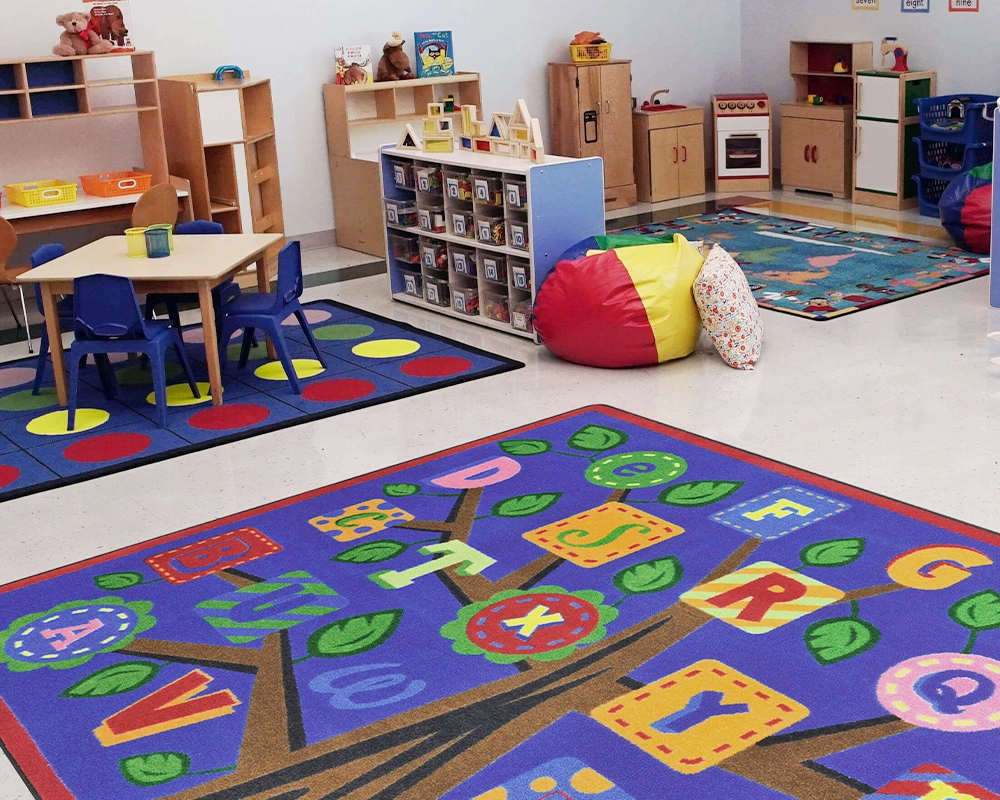


11. Growth Mindset Posters
Promote a positive learning environment by displaying growth mindset posters. These posters encourage students to embrace challenges, learn from mistakes, and develop resilience. Quotes like “Mistakes are proof that you are trying” can inspire students to persevere and keep a positive attitude toward learning.
12. Classroom Jobs Board
Assigning classroom jobs to students can instill a sense of responsibility and teamwork. Create a jobs board that outlines various tasks and rotates assignments weekly. Decorate the board with creative visuals and labels to make it fun and engaging for students.
13. Seasonal Decorations
Change your classroom decorations with the seasons to keep the environment fresh and exciting. For example, you can use leaves and pumpkins in autumn, while winter can feature snowflakes and holiday themes. Seasonal decorations can make the classroom feel more dynamic and aligned with the time of year.
14. Learning Stations
Create learning stations around the classroom where students can engage in different activities. For example, a math station with puzzles and games, a reading station with books and comfy seating, and a science station with experiments and models. These stations can make learning more interactive and hands-on.
15. Behavior Management Charts
Use behavior management charts to track and reward positive behavior. For example, a sticker chart where students earn stickers for good behavior or a color-coded system that tracks daily behavior. These charts can help create a positive and structured learning environment.
16. Calendar and Weather Board
A calendar and weatherboard can be a great way to start the day. Use it to mark important dates, events, and holidays. Incorporate weather-related elements to discuss daily weather conditions. This can help students learn about time management and meteorology.

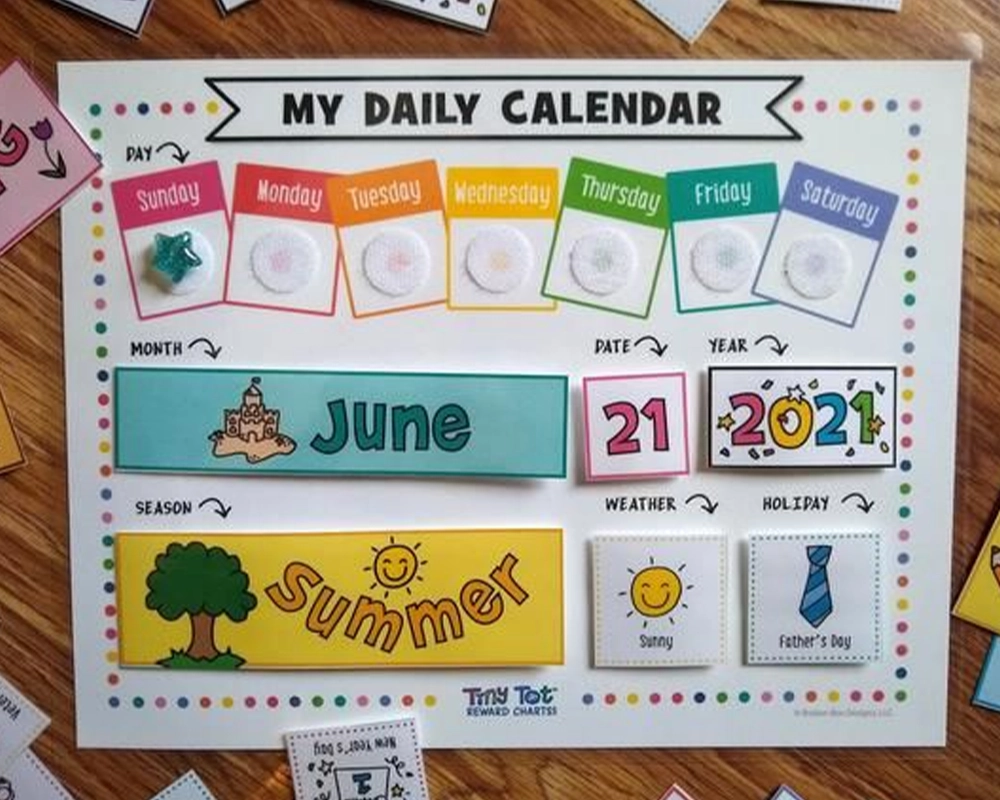

17. Sensory Wall
A sensory wall can be a great addition to the classroom for younger students. Use different textures, colors, and shapes to create an interactive wall stimulating their senses. This can be particularly beneficial for students with sensory processing needs.
18. Alphabet and Number Lines
Display alphabet and number lines around the classroom to support early literacy and numeracy skills. Use colorful and engaging designs to make these lines visually appealing. Position them at eye level so students can easily reference them during lessons.
19. Motivational Banners
Hang motivational banners around the classroom to create a positive atmosphere. Use phrases like “You Can Do It!” and “Believe in Yourself” to encourage students. These banners can serve as constant reminders of their potential and capabilities.
20. Nature-Inspired Decorations
Bring the outside in by incorporating nature-inspired decorations. Use plants, flowers, and nature-themed posters to create a calming and refreshing environment. This can help students feel more connected to nature and improve their well-being.
21. Cultural Displays
Celebrate diversity by creating cultural displays highlighting traditions, holidays, and customs worldwide. This can promote inclusivity and help students learn about and appreciate other cultures.
22. Technology Integration
Incorporate technology into your classroom decorations. Use digital displays, projectors, and interactive whiteboards to create a tech-friendly learning environment. This can make lessons more dynamic and engaging for tech-savvy students.
23. Personalized Name Tags
Use personalized name tags for students’ desks and lockers. This helps with organization and gives students a sense of ownership and belonging in the classroom. Use creative designs and colors to make the name tags fun and unique.

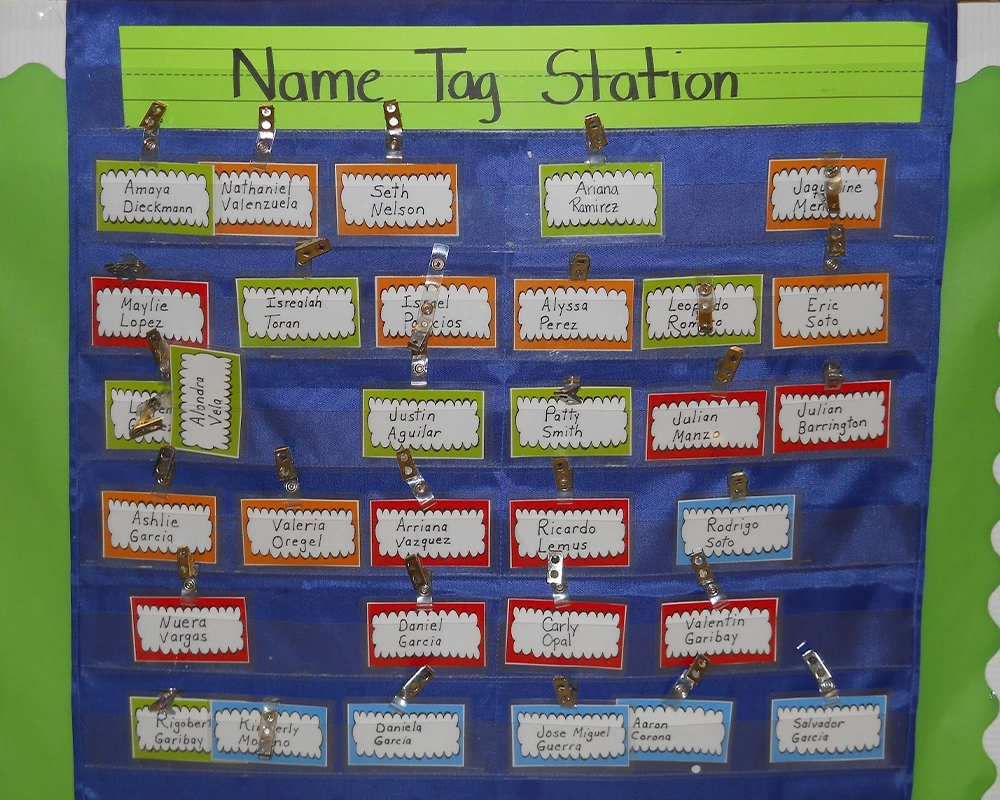

Why Decorate Your Classroom?
Decorating your classroom is much more than just making the space look nice. Creating an environment that supports learning, fosters engagement, and makes students feel comfortable and motivated is critical. Effective classroom decoration ideas can be visual stimuli that enhance cognitive functions and improve memory retention. A thoughtfully decorated classroom reflects the care and dedication of the teacher, which can, in turn, inspire students to put more effort into their work.
One of the primary reasons to decorate your classroom is to create a welcoming atmosphere. Students spend significant time in the school; a warm, inviting space can make them feel more at home. This sense of belonging can reduce anxiety, making it easier for students to focus and participate actively in lessons. Additionally, decorations that reflect students’ interests and cultures can help build a more inclusive environment where every student feels valued.
Decorations can also serve as educational tools. Posters, charts, and displays can reinforce key concepts and provide constant visual reminders of important information. For example, a bulletin board displaying a multiplication chart or a periodic table can be a useful reference for students. Interactive decorations, like a question of the day or a rotating display of student work, can encourage students to participate actively in their learning.
Furthermore, classroom decorations can help establish a positive learning culture. Motivational quotes and growth mindset posters can encourage students to embrace challenges and view mistakes as opportunities for growth. Celebrating student achievements through displays of their work can boost their confidence and promote a culture of excellence and effort.
Finally, changing decorations periodically can keep the classroom environment dynamic and interesting. Seasonal decorations or themes related to current lessons can keep students curious and excited about what they will learn next. This continuous renewal can help maintain a high level of engagement throughout the school year.

How Often Should I Change My Classroom Decorations?
Changing classroom decorations regularly can play a significant role in keeping the learning environment fresh and engaging. But how often should you change them? The answer largely depends on several factors, including your themes, student engagement level, and the decor’s nature. Here are some guidelines to consider:
- Seasonal and Holiday Themes: Seasonal decorations can be updated every few months to reflect seasonal changes or upcoming holidays. For instance, autumn-themed decorations with pumpkins and fall leaves can be replaced by winter themes featuring snowflakes and festive elements as the weather changes. This keeps the classroom environment dynamic and aligns it with real-world changes that students observe outside the school.
- Curriculum-Based Themes: If you use curriculum-based themes, consider updating decorations with each new unit or chapter. For example, a science corner might display information about the solar system during one unit, which can then be swapped out for materials about ecosystems in the next. This keeps the educational content relevant and supports students’ learning by providing timely visual aids.
- Monthly or Quarterly Updates: A more general approach is to refresh classroom decorations monthly or quarterly. This could involve changing out bulletin boards, student work displays, or motivational posters. Regular updates help maintain student interest and prevent the environment from becoming stale. It also provides an opportunity to highlight new student achievements and projects.
- Student Input: Involving students in the decision to change decorations can be highly beneficial. Allowing students to help design and implement new themes can foster a sense of ownership and pride in their classroom. Additionally, soliciting their feedback on what they would like to see can ensure that the changes are meaningful and engaging for them.
- Special Events and Projects: Sometimes, special events or projects warrant a change in decorations. For example, if the class participates in a school-wide science fair or cultural festival, updating the decorations to reflect this can help build excitement and focus around the event. It also shows students that their classroom is a living, evolving space that reflects their activities and interests.
- Avoiding Overstimulation: While keeping the classroom visually stimulating is essential, it’s equally crucial to avoid overstimulation. Too frequent changes or overly busy decorations can distract students and detract from the learning environment. Striking a balance where changes are regular but not overwhelming is critical.
Changing classroom decorations periodically can help maintain a fresh and engaging learning environment. Whether aligning with seasons, curriculum changes, or student feedback, these updates can enhance the educational experience. Keeping your decorations relevant and dynamic can create a classroom atmosphere that continually motivates and inspires your students.


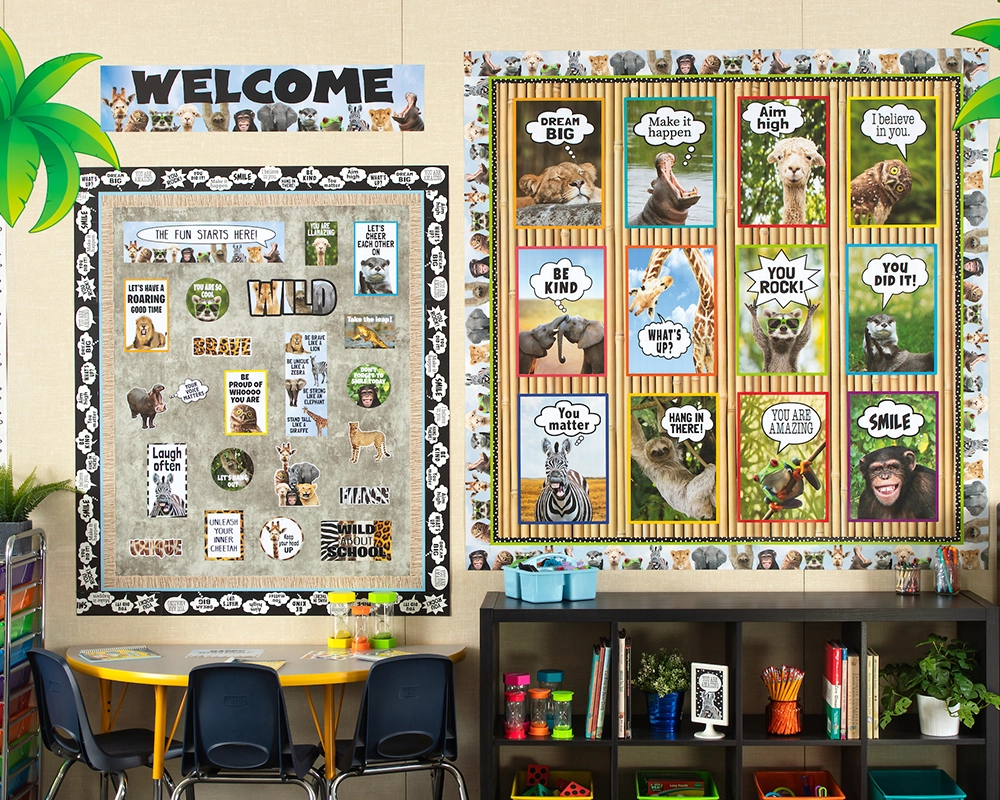
How Do Classroom Decorations Impact Student Learning?
Classroom decoration ideas have a profound impact on student learning. The environment in which students learn can influence their cognitive development, emotional well-being, and overall academic performance. Effective classroom decorations can create a setting that enhances focus, fosters creativity, and supports various learning styles.
Firstly, classroom decorations can help improve concentration and reduce distractions. A well-organized and visually appealing classroom can minimize clutter and chaos, creating a calm environment where students can focus better. Using calming colors and avoiding overly busy or cluttered decorations can help maintain a sense of order and tranquility. Additionally, organizing materials and resources in a visually appealing manner can make it easier for students to find what they need, reducing frustration and helping them stay on task.
Secondly, visual aids such as charts, maps, and diagrams can reinforce learning and aid in memory retention. These tools provide students with constant visual reminders of key concepts and information. For instance, a timeline of historical events can help students better understand the sequence and context of what they are learning in history class. Similarly, a word wall can support vocabulary development and spelling skills. Teachers can create a rich, supportive learning environment by integrating these visual elements into the classroom design.
Classroom decorations can also stimulate creativity and imagination. Bright colors, exciting textures, and thematic decorations can inspire students and make learning more engaging. For example, decorating a reading corner with cozy pillows, a rug, and posters of book characters can make reading time more inviting and enjoyable. Similarly, a science corner with models, specimens, and experiment displays can spark curiosity and encourage hands-on learning.

Furthermore, decorations can support differentiated learning by catering to various learning styles. Visual learners, in particular, benefit from seeing information displayed differently. For example, visual schedules can help students understand the structure of their day, while graphic organizers can help them process information. Interactive elements, such as manipulatives and sensory walls, can also support kinesthetic learners who learn best through movement and touch.
Moreover, classroom decorations can positively impact students’ emotional well-being. A safe and welcoming classroom can help reduce anxiety and increase students’ willingness to participate. Personal touches, such as displaying student artwork or creating a space for student-led projects, can foster a sense of pride and ownership. This emotional connection to the classroom can enhance students’ motivation and engagement.
Finally, classroom decorations can help build a sense of community and collaboration. Group projects and collaborative displays can encourage teamwork and communication skills. For example, a class mural or a collaborative bulletin board where each student contributes can foster a sense of unity and shared purpose. Teachers can promote social skills and a positive classroom culture by creating opportunities for students to work together on decorating their classrooms.


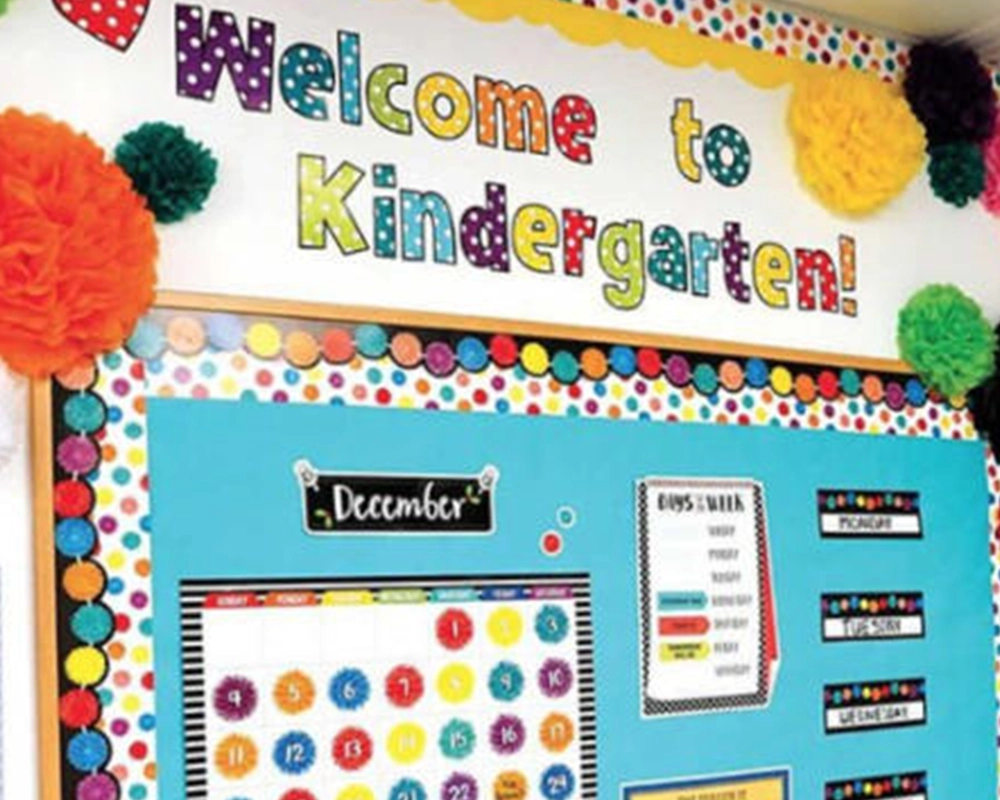
How can I involve students in decorating the classroom?
Involving students in classroom decor is a great way to build community and ownership. Students feel more connected and engaged When they contribute to their learning environment. Here are several effective strategies to get students involved in classroom decoration:
- Collaborative Projects: Encourage students to work together on larger decoration projects. For example, creating a mural or a large wall display can be a team effort where each student contributes a part. This not only helps in decorating the classroom but also fosters teamwork and collaboration. You can choose themes relevant to the student’s learning, making the decoration process educational and fun.
- Student Art Displays: Dedicate a wall or a classroom section to display students’ artwork. Rotate the art regularly so that every student can showcase their work. This can include drawings, paintings, or even 3D art projects. Acknowledging their creativity boosts their confidence and adds a personal touch to the classroom decor.
- Themed Decoration Contests: Organize small contests where students can decorate a part of the classroom according to a specific theme. This could be related to seasons, holidays, or educational topics. Offer small prizes or certificates for the best decorations. This not only makes the classroom look vibrant but also adds an element of fun and excitement.
- Interactive Bulletin Boards: Create bulletin boards that students can interact with. For example, a “Star Student” board where students can post their achievements or a “Question of the Week” board where they can contribute answers. This makes the decorations dynamic and engaging.
- Personalized Spaces: Allow students to personalize their own spaces within the classroom. This could be their desks, cubbies, or specific bulletin boards. Providing them with materials like stickers, markers, and posters to decorate their areas can make them feel more at home and invested in their learning environment.
- DIY Craft Sessions: Hold regular craft sessions where students can create decorations for the classroom. These could be seasonal decorations, thematic crafts, or educational aids like charts and diagrams. DIY projects can be tailored to different subjects and help reinforce what they are learning.
- Gardening Projects: If space allows, create a small classroom garden or a plant corner. Let students bring in plants and take turns caring for them. This adds a touch of nature to the classroom and teaches students about responsibility and the environment.
- Student Committees: Form a decoration committee with a rotating membership so different students can have a say in how the classroom looks. This committee can develop new decoration ideas and themes, ensuring the school remains fresh and appealing throughout the year.
- Cultural Displays: Celebrate the diversity of your classroom by allowing students to create displays that represent their cultural backgrounds. This can include traditional art, crafts, and decorations. It not only enriches the classroom environment but also promotes inclusivity and understanding.
- Feedback and Suggestions: Regularly ask students for feedback and suggestions on classroom decorations. This can be done through suggestion boxes or class discussions. Implementing their ideas makes them feel valued and more engaged in the classroom setting.


Factors to Consider for Classroom Decoration Ideas
When planning classroom decoration ideas, it’s essential to consider various factors to ensure that the environment is conducive to learning and meets the needs of all students. Here are some key considerations:
Safety and Accessibility
Safety should always be a top priority. Ensure all decorations are securely fastened and not pose any tripping hazards or obstructions. Avoid using small, detachable items that could be a choking hazard for younger children. Additionally, ensure all students can access and interact with the decorations, including those with disabilities. Use materials and arrangements that are safe and reachable for everyone.
Educational Value
Decorations should not only beautify the classroom but also contribute to the learning experience. Incorporate educational elements such as charts, maps, and diagrams that reinforce the curriculum. Interactive decorations, like word walls and math stations, can make learning more engaging. Ensure that every decorative piece has a purpose and enhances the educational environment.
Inclusivity and Representation
A diverse and inclusive classroom environment is essential. Ensure that the decorations reflect the cultural diversity of your students. Use images, posters, and materials representing various cultures, languages, and backgrounds. This makes all students feel valued and promotes a more inclusive and respectful classroom atmosphere.
Flexibility and Adaptability
Classroom decorations should be flexible and adaptable to different themes, seasons, and learning modules. Consider using modular and movable decorations that can be easily changed or updated. This keeps the classroom environment dynamic and prevents it from becoming stale. It also allows you to tailor the decor to specific lessons and activities.
Budget Considerations
Decorating a classroom can be done on a budget. Use affordable materials like construction paper, recycled items, and donations from parents or the community. DIY projects can be both cost-effective and meaningful. Plan your decorations in a way that maximizes impact without breaking the bank.
Student Involvement
As discussed earlier, involving students in the decoration process is beneficial. It fosters a sense of ownership and pride in their learning environment. Encourage students to contribute ideas and creations and incorporate their work into the classroom decor. This not only enhances the decor but also builds a positive classroom culture.
Longevity and Durability
Choose durable decorations that withstand daily wear and tear in a busy classroom. Laminating posters and using sturdy materials can extend the life of your decorations. This ensures that they remain attractive and functional throughout the school year.
Organizational Impact
Good classroom decorations should also aid in organization. Use labels, color coding, and clear signage to help students navigate the classroom and find what they need. Organizational tools like job charts and schedules can be functional and decorative, contributing to a well-ordered learning environment.
Sensory Considerations
Consider the sensory needs of your students when decorating. Some children may be sensitive to bright lights, loud colors, or overwhelming patterns. Aim for a balance that stimulates learning without causing sensory overload. Soft colors, natural elements, and calming spaces can create a welcoming and comfortable atmosphere for all students.
Seasonal and Thematic Relevance
Keeping the classroom decor relevant to the current season or theme can enhance the learning experience. Rotate decorations to align with holidays, seasons, or specific lesson plans. This keeps the environment fresh and exciting and helps reinforce what students are learning.
Transforming your classroom with these creative decoration ideas can significantly enhance the learning experience for children. A thoughtfully decorated classroom stimulates curiosity and engagement and fosters students’ sense of belonging and pride. You can create a dynamic and inspiring learning environment by involving students in the decoration process and considering safety, inclusivity, and educational value. Embrace these ideas to make your classroom a vibrant and welcoming space where children can thrive and enjoy their educational journey.
Remember, a well-decorated classroom is more than just visually appealing; it’s a powerful tool for enhancing learning and building a positive classroom culture. Happy decorating!


